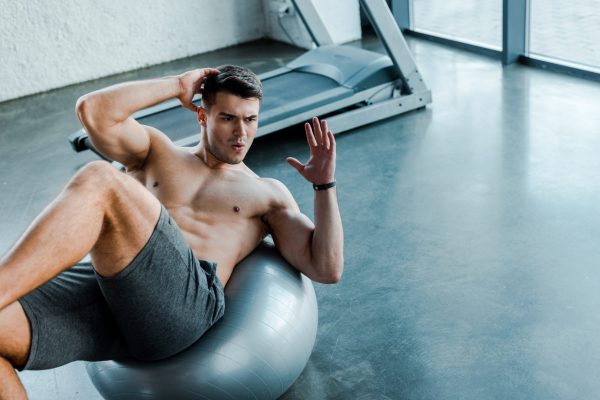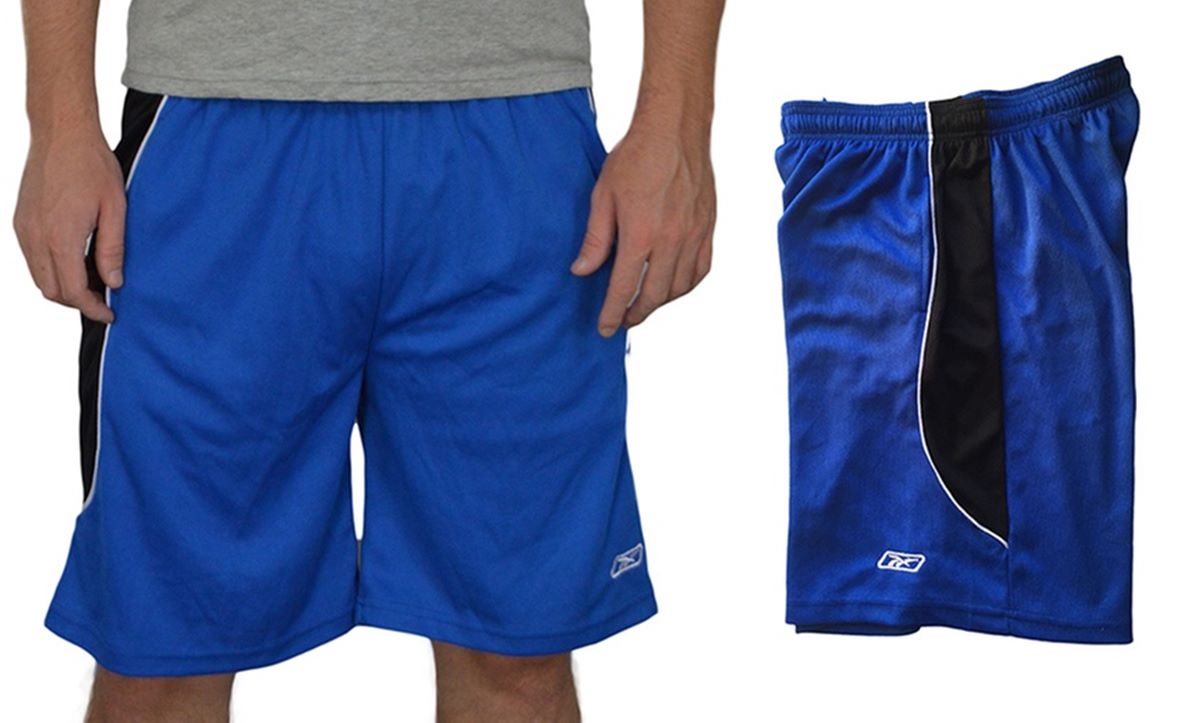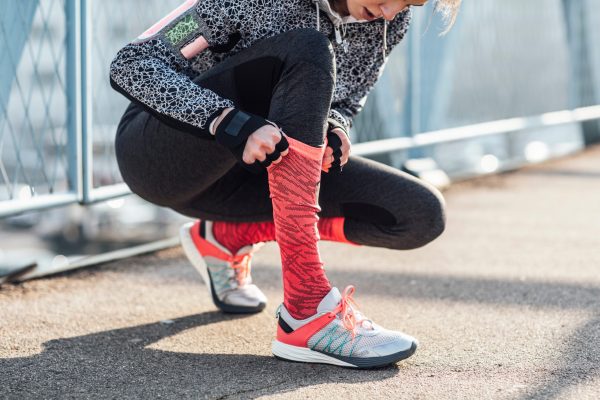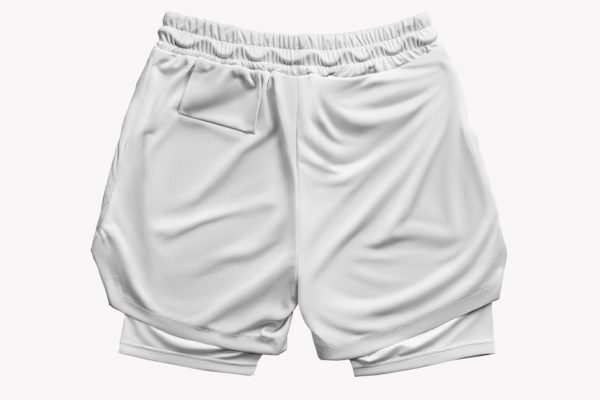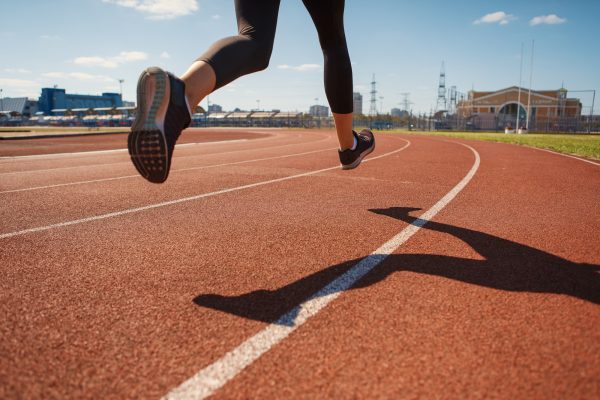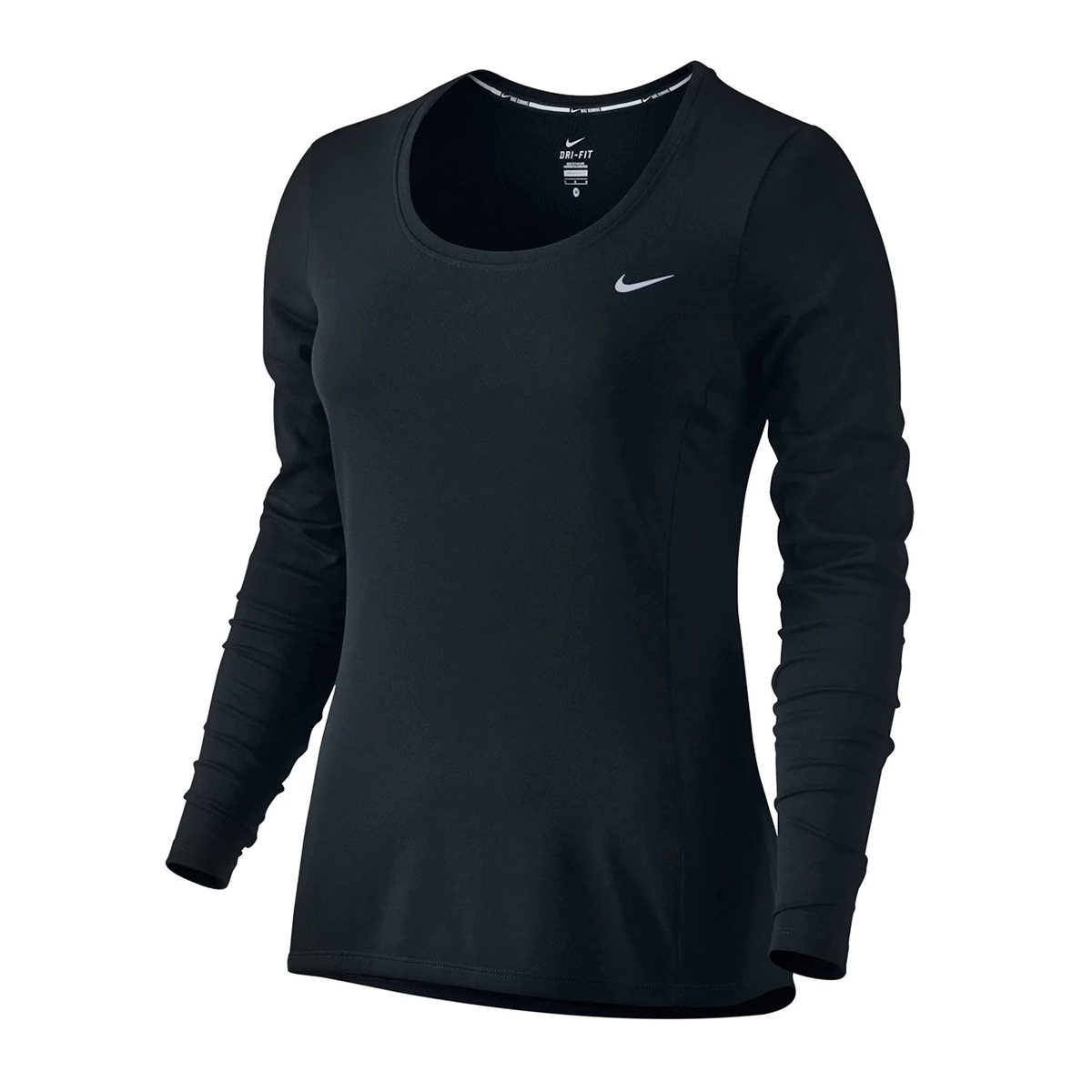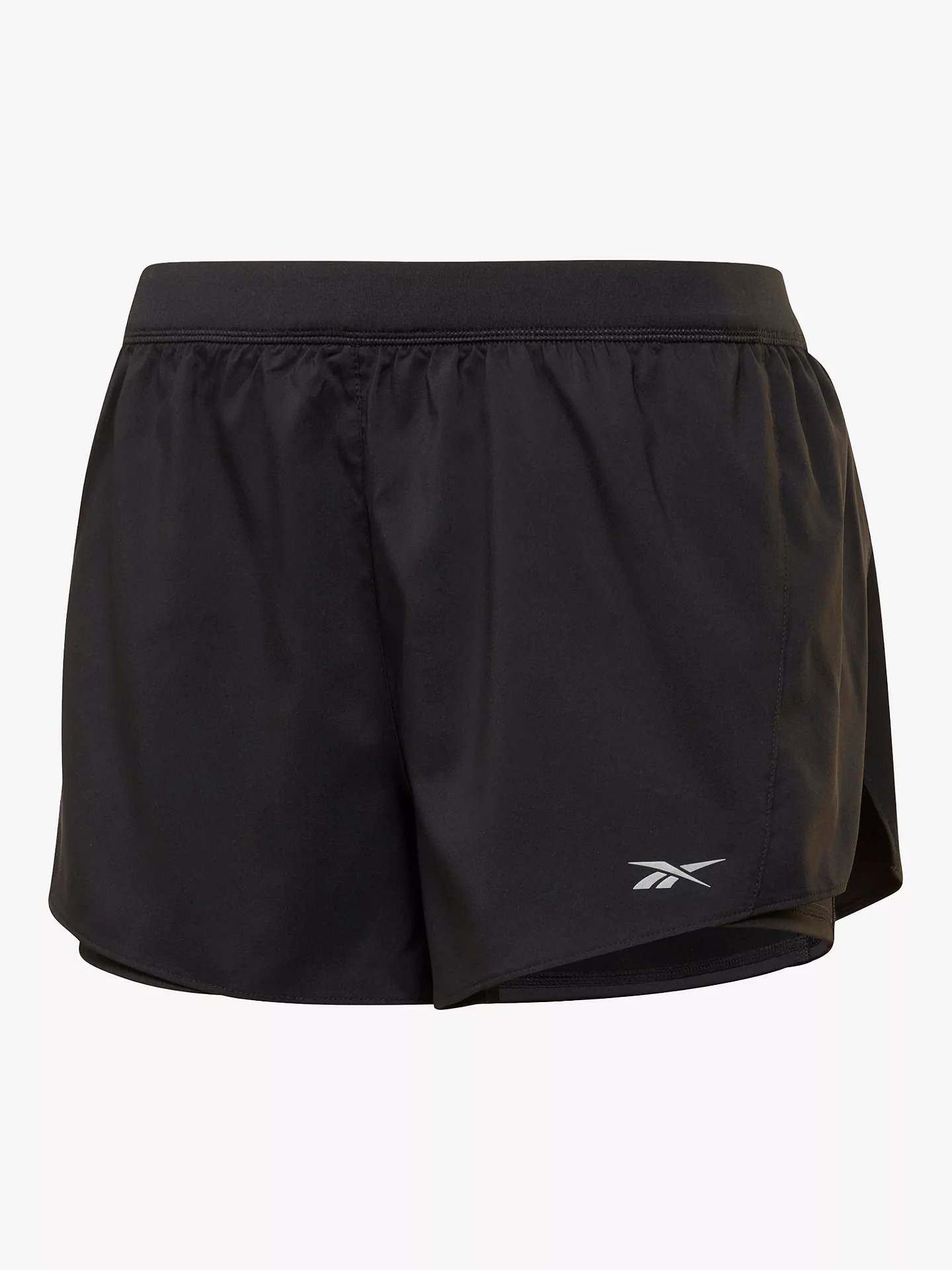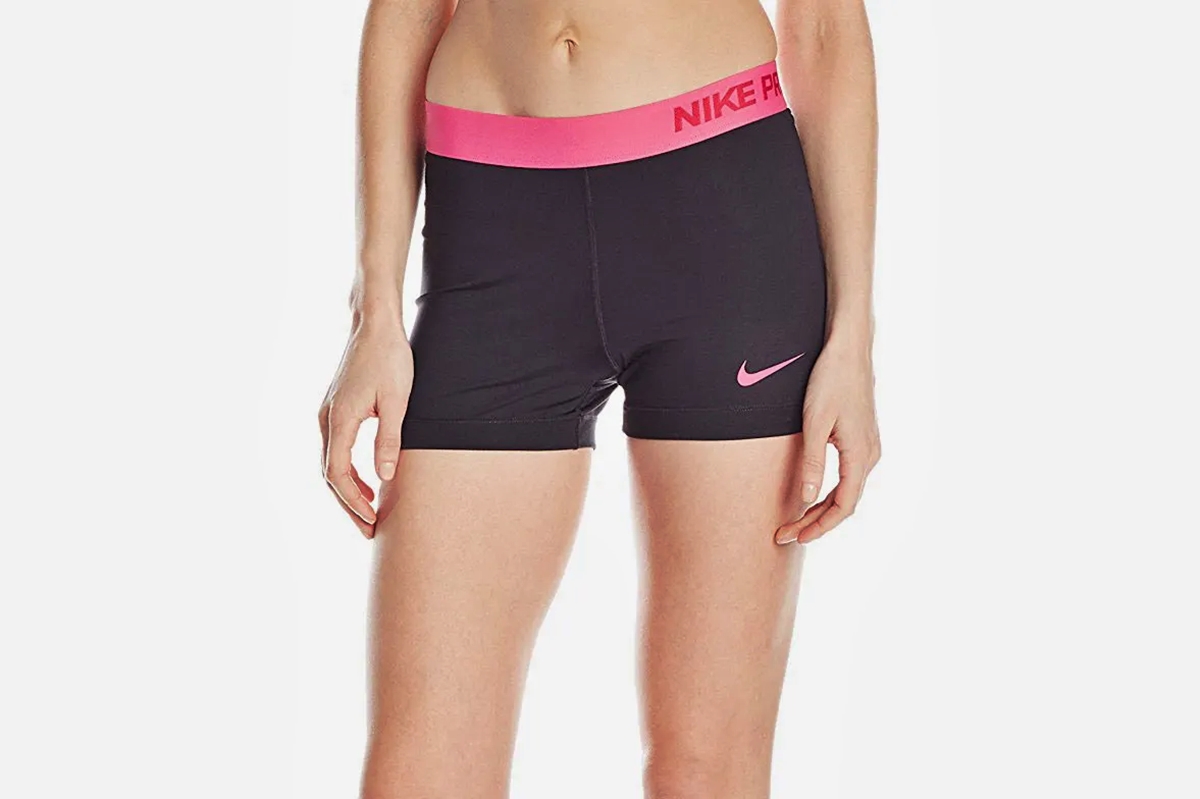

Featured
Why Don’t I Sweat When I Work Out
Modified: January 2, 2024
Discover why sweat doesn't come easily during your workouts. The featured article explores the reasons behind this common phenomenon.
Introduction
When engaging in physical activity, such as a vigorous workout, it is common for the body to respond by producing sweat. Sweat is the body’s natural way of cooling down and regulating its temperature during exercise. However, you may have noticed that despite your intense efforts at the gym or during a workout, you don’t seem to sweat as much as others. This can lead to questions and concerns about why you don’t sweat when you exercise.
Sweating is a complex process that is influenced by various factors, including fitness level, body size, hydration, acclimation to exercise, temperature, and even certain medical conditions or medications. Understanding these factors can help shed light on why some individuals may sweat more or less during workouts.
In this article, we will explore the reasons why you may not sweat as much during exercise and what factors contribute to variations in sweat production. So, if you’ve ever wondered why you don’t break into a heavy sweat while working out, keep reading to uncover the science behind sweating and how it relates to your fitness routine.
Understanding Sweating and Exercise
Sweating is a natural physiological process that helps regulate body temperature. When you exercise, your body generates heat as a result of increased metabolism and muscle activity. In response to this heat, sweat glands located throughout the body release sweat onto the skin’s surface.
Sweat consists primarily of water, but it also contains small amounts of electrolytes, such as sodium, potassium, and chloride. As the sweat evaporates from your skin, it helps dissipate heat and cools your body down. This is vital to prevent overheating, as excessive heat can lead to heatstroke and other heat-related illnesses.
The amount of sweat produced during exercise varies from person to person. While some individuals might be drenched in sweat after a short workout, others may only have a light sheen. It’s important to note that the amount of sweat does not determine the intensity or effectiveness of your workout. Sweat production is influenced by several factors, which we will explore in the following sections.
Exercise intensity plays a significant role in sweat production. The harder you work, the more heat your body generates, thus triggering a greater sweat response. High-intensity activities like running, HIIT workouts, or cardio exercises tend to elicit a more substantial sweat response compared to low-intensity exercises like walking or yoga.
Additionally, the duration of your workout can also impact sweat production. Longer workouts generally result in increased sweat as your body has more time to generate heat and cool down through the evaporation of sweat.
Now that we have discussed the basics of sweating and exercise, let’s dive deeper into the various factors that can influence the amount of sweat you produce during your workouts.
Factors That Affect Sweating During Workouts
Several factors can influence the amount of sweat you produce during workouts. Understanding these factors can help explain why some individuals may sweat more or less than others. Let’s explore these factors in more detail:
Fitness Level: Your fitness level plays a crucial role in sweat production. Fit individuals tend to have a more efficient cardiovascular system, allowing them to cool their bodies more effectively through sweating. As your fitness level improves, your body becomes more efficient at regulating temperature, leading to increased sweat production during workouts.
Body Size: Body size and composition can affect how much you sweat during exercise. Larger individuals with a higher body mass tend to produce more sweat because they have a larger surface area for heat dissipation. Additionally, individuals with more muscle mass may sweat more due to higher metabolic heat production during exercise.
Hydration: The level of hydration in your body can impact sweat production. Proper hydration is essential for maintaining optimal bodily functions, including sweat production. When your body is adequately hydrated, it can produce an adequate amount of sweat to cool down efficiently. On the other hand, dehydration can impair the sweat response, leading to decreased sweat production during workouts.
Acclimation: Regular exercise and exposure to heat can lead to acclimation, a process in which your body becomes more efficient at regulating temperature and producing sweat. Acclimated individuals tend to sweat more during workouts as their bodies have adapted to the demands of exercise. This adaptation allows them to cool down more effectively and maintain a stable body temperature.
Temperature: Environmental temperature plays a significant role in sweat production. When the ambient temperature is high, your body will naturally produce more sweat to cool down. On the other hand, in colder environments, your body may not need to produce as much sweat to maintain its temperature.
Medical Conditions: Certain medical conditions can affect sweat production during exercise. Conditions like hypothyroidism, diabetes, and autonomic nervous system disorders can impair sweat production or alter the body’s cooling mechanisms. If you have concerns about your sweat response during workouts, it may be worth discussing with your healthcare provider.
Medications: Some medications, such as anticholinergic medications or certain antidepressants, can interfere with sweat production and lead to decreased sweating during exercise. If you’re taking any medications and notice a decrease in sweat production during workouts, consult with your healthcare provider to explore potential side effects.
By considering these factors, you can gain a better understanding of why you may not sweat as much as others during workouts. Remember, everyone’s body is unique, and individual differences in sweat production are normal and should not be a cause for concern. Focus on listening to your body and engaging in regular exercise that challenges you and promotes overall health and well-being.
Fitness Level and Sweating
Your fitness level can significantly impact the amount of sweat you produce during workouts. As you become more physically fit, your body becomes more efficient at regulating temperature and cooling itself through sweat production.
Fit individuals tend to have a more developed cardiovascular system, which allows for better blood circulation and oxygen delivery to the muscles. This enhanced cardiovascular function facilitates greater heat dissipation and sweat production during exercise.
When you engage in physical activity, your body’s metabolic rate increases, generating more heat. In response to this heat, your sweat glands are activated to produce sweat. Fit individuals have a larger number of sweat glands, making them capable of producing more sweat to cool down their bodies.
Moreover, regular exercise improves your body’s overall thermoregulatory system. As you consistently challenge your body with physical activity, it adapts by increasing its sweat response and decreasing the threshold for sweat initiation. This means that as your fitness level improves, you will sweat more readily and efficiently during workouts.
However, it’s important to note that fitness level alone does not determine the amount of sweat produced. Factors such as body size, hydration, and environmental conditions also play a role in sweat production during exercise. Therefore, even if you’re not as physically fit as others, you can still experience an adequate sweat response during workouts.
If you’re aiming to increase your fitness level and sweat more during exercise, incorporating cardiovascular activities and high-intensity interval training (HIIT) into your fitness routine can be beneficial. These types of exercises are known to elicit a greater sweat response due to their higher energy demands and increased metabolic heat production.
Keep in mind that sweating is a natural and individualized response. The amount of sweat you produce does not necessarily indicate the effectiveness or intensity of your workout. Listen to your body, stay hydrated, and focus on overall fitness improvements rather than solely sweating more or less.
Remember, sweating is just one aspect of the body’s complex mechanisms for temperature regulation. It’s a sign that your body is working hard, but it shouldn’t be the sole measure of your progress or effort. Set realistic fitness goals, stay consistent with your workouts, and embrace the unique way your body responds to exercise.
Body Size and Sweat Production
Body size plays a significant role in determining the amount of sweat an individual produces during workouts. The size and surface area of the body directly influence the heat dissipation capacity and therefore affect sweat production.
Larger individuals generally have a higher body mass, which means they have a larger surface area through which heat can be released. The greater surface area allows for more sweat glands, resulting in increased sweat production. Additionally, larger individuals tend to have more muscle mass, which produces more metabolic heat during exercise, leading to higher sweat production to cool down the body.
In contrast, smaller individuals with a lower body mass have a relatively smaller surface area, resulting in fewer sweat glands. Consequently, they may produce less sweat during workouts than their larger counterparts. Similarly, individuals with lower muscle mass may generate less metabolic heat, leading to decreased sweat production.
This does not mean that smaller individuals are less fit or that their workouts are less effective. Sweat production varies widely among individuals and can be influenced by multiple factors, including fitness level, body composition, and hydration status.
It’s important to note that while body size can influence sweat production, it does not necessarily reflect the intensity or effectiveness of a workout. A lighter workout may still be sufficient for smaller individuals, and they may still experience the necessary physiological benefits without excessive sweating.
Moreover, sweat production is a function of the body’s thermoregulatory system, which is influenced by various factors, including the core temperature and the demands placed on the body during exercise. So, even individuals with smaller body sizes can have a robust sweat response if the conditions warrant it, such as in high-intensity or prolonged exercise sessions.
Remember, the primary goal of sweating is to regulate body temperature and prevent overheating. The amount of sweat produced may vary from person to person, and it’s essential to focus on overall fitness and well-being rather than comparing sweat production based solely on body size.
So, whether you’re big or small, embrace your unique body size and focus on engaging in regular exercise that aligns with your fitness goals. Sweat production should not be the sole metric for evaluating the effectiveness of your workouts. Instead, pay attention to how your body feels and progresses over time to gauge your fitness achievements.
Hydration and Sweating
The level of hydration in your body has a direct impact on sweat production during workouts. Adequate hydration is essential for maintaining optimal bodily functions, including the ability to produce sweat efficiently.
When you’re properly hydrated, the volume of water in your body is at an optimal level. This hydration enables your sweat glands to function effectively, resulting in an adequate sweat response during exercise. Your body can release sweat in the appropriate amounts to cool down and regulate its temperature.
On the other hand, dehydration can hinder the sweat response. When you’re dehydrated, the body conserves water and reduces sweat production. This reduced sweat output can lead to an impaired ability to regulate body temperature, potentially increasing the risk of overheating.
Being well-hydrated before, during, and after exercise is crucial for maintaining proper sweat production. It’s recommended to drink fluids, preferably water, before and during your workout to replenish any fluid loss and ensure your body is adequately hydrated. While the exact amount of water needed varies depending on individual factors, such as exercise intensity, duration, and environmental conditions, aim to drink enough to quench your thirst and maintain hydration.
It’s important to note that increased fluid intake does not necessarily translate to increased sweat production. The body has mechanisms in place to regulate and maintain a balance between fluid intake and sweat output. Drinking excessive amounts of water will not necessarily result in increased sweating but can instead lead to overhydration, which can be harmful.
Monitoring your hydration status throughout the day, not just during exercise, is crucial. Pay attention to signs of dehydration, such as dark urine, dry mouth, fatigue, and dizziness, as these may indicate an inadequate fluid intake. Adjust your water consumption accordingly to maintain proper hydration levels.
Remember, maintaining proper hydration is not only important for sweat production but also for overall physical and cognitive performance. Drinking enough water throughout the day will help support your body’s functions, including sweat regulation, and contribute to your overall well-being.
Consult with a healthcare professional or registered dietitian for personalized hydration recommendations based on your unique needs, especially if you have specific health conditions or engage in intense exercise regimens.
Acclimation and Sweating
Acclimation refers to the process by which your body gradually adapts to a particular environment or stimulus. When it comes to exercise, acclimation plays a role in how your body responds to physical activity and sweat production.
Regular exercise and exposure to heat can lead to acclimation, which involves a series of physiological adaptations that improve your body’s ability to regulate temperature and produce sweat efficiently.
During the acclimation process, your body becomes more efficient at cooling itself down through sweat production. This adaptation allows for an increased sweat response during workouts, which helps maintain proper temperature regulation and prevent overheating.
Acclimation involves several changes in the body’s thermoregulatory mechanisms. One significant adaptation is an increase in the total number and density of sweat glands in the skin. This means that acclimated individuals have a greater capacity to produce sweat, resulting in a more robust sweat response during exercise.
Furthermore, acclimation can lead to a lower sweat threshold, meaning your body starts producing sweat at a lower core body temperature compared to when you were not acclimated. This allows for more efficient cooling during exercise, as your body initiates the sweat response earlier to counteract rising core temperatures.
The process of acclimation typically takes a few weeks and varies from person to person. During this period, it’s important to gradually expose yourself to the exercise intensity and environmental conditions you wish to acclimate to. This gradual exposure allows your body to adapt and adjust its thermoregulatory mechanisms without undue stress or risk of overheating.
Acclimation benefits not only individuals who frequently exercise in hot or humid conditions but also those who engage in intense workouts or high-intensity activities. The adaptations acquired through acclimation can enhance your overall exercise performance and help optimize the sweat response.
It’s worth noting that acclimation effects can be lost over time if you discontinue regular exercise or exposure to heat. If you take a break from exercising or experience a significant decrease in physical activity, your body may require another adaptation period to reacclimate to exercise and regain its efficient sweat response.
Overall, acclimation to exercise and heat can significantly impact how your body responds to physical activity. By consistently challenging yourself through exercise and gradually exposing yourself to heat, you can enhance your body’s ability to regulate temperature, produce sweat efficiently, and improve overall performance and safety during workouts.
Temperature and Sweat Response
The ambient temperature plays a critical role in the body’s sweat response during exercise. When the temperature rises, your body’s cooling mechanisms, including sweat production, become more active to help regulate body temperature and prevent overheating.
In higher temperatures, your body initiates a sweat response earlier and produces more sweat to facilitate evaporative cooling. The evaporation of sweat from your skin’s surface helps dissipate heat and cools down the body.
During exercise in hot environments, such as during summer months or in a heated indoor environment, your sweat glands tend to be more active. This increased sweat production is your body’s way of coping with the elevated external temperature and the additional heat generated by physical activity.
Conversely, in colder temperatures, your body may not need to produce as much sweat to cool down since the external environment can assist in maintaining a comfortable body temperature. However, it’s important to note that in extremely cold temperatures, sweat can still occur even if it doesn’t evaporate quickly, leading to potential moisture buildup and discomfort.
The body’s sweat response is finely tuned to respond to changes in temperature to maintain homeostasis. It’s designed to help regulate body temperature within a narrow, optimal range. When the body overheats, the sweat response is upregulated to increase heat dissipation and maintain a stable core temperature.
It’s essential to consider the temperature and adjust your clothing, hydration, and intensity of exercise accordingly. When exercising in hot or humid conditions, it’s crucial to dress in lightweight and breathable clothing that allows sweat to evaporate easily. Additionally, maintaining proper hydration is vital to replenish the fluids lost through increased sweat production.
On the other hand, in colder temperatures, layering your clothing can help regulate body temperature as you warm up during exercise. It’s also important to stay hydrated, as the body still loses water through respiration and potentially some sweat production, even in cooler temperatures.
Remember that individual factors, such as fitness level and acclimation to different temperatures, can influence sweat response. Fit individuals and those who are acclimated to exercise in hot environments may produce more sweat even in moderate temperatures compared to those who are less fit or less acclimated.
Adapting your workout routine to include different environments and temperature ranges can provide a well-rounded exercise experience and allow your body to adapt to various conditions.
Overall, the body’s sweat response is closely tied to the ambient temperature. Sweating is a natural and essential mechanism that helps regulate body temperature during exercise, ensuring that your body stays within a safe and optimal range.
Medical Conditions and Sweating
Sweating is a normal physiological response that helps regulate body temperature during exercise and in various environmental conditions. However, certain medical conditions can impact the body’s ability to sweat appropriately, leading to variations in sweat production.
Conditions such as hypothyroidism, diabetes, autonomic nervous system disorders, and certain hormonal imbalances can affect the sweat glands and disrupt the body’s thermoregulatory mechanisms. In these cases, individuals may experience decreased sweat production or an altered sweat response during exercise.
Hypothyroidism, a condition characterized by an underactive thyroid gland, can lead to reduced sweating. The thyroid hormone plays a role in regulating metabolism, which is linked to the body’s heat production and sweat response. A decreased thyroid function can result in impaired sweat gland activity and ultimately lead to decreased sweat production during physical activity.
Diabetes, particularly uncontrolled diabetes, can also affect sweat production. High blood sugar levels can damage nerves, including those responsible for transmitting signals to the sweat glands. This can lead to decreased sweat production, particularly in the affected areas of the body.
Autonomic nervous system disorders, such as autonomic neuropathy, can disrupt the body’s normal automatic processes, including the sweat response. The autonomic nervous system controls involuntary functions, including sweating. Damage to the nerves that control sweat glands can result in decreased or absent sweating during exercise or in response to heat.
Additionally, certain hormonal imbalances, such as menopause in women, can lead to changes in sweat production. The hormonal fluctuations that occur during menopause can affect the body’s thermoregulatory system, leading to variations in sweat production and potentially resulting in hot flashes and night sweats.
If you suspect that a medical condition may be affecting your sweat response during exercise, it is important to consult with a healthcare professional. They can assess your symptoms, perform appropriate tests, and provide guidance on managing any underlying conditions that may be impacting your sweat production.
It’s important to note that individuals with medical conditions affecting sweat production should take precautions during exercise to prevent overheating. This may include modifying the intensity and duration of physical activity, exercising in cooler environments, and consulting with a healthcare professional for personalized recommendations.
Understanding and addressing any medical conditions that impact sweat production is crucial for maintaining your overall health and safety during workouts. By working closely with your healthcare team, you can develop a tailored approach to exercise that considers your unique circumstances and helps you stay active while managing any health challenges.
Medications and Sweating
It’s important to recognize that certain medications can affect sweat production during exercise. Some medications can interfere with the body’s ability to produce sweat, leading to changes in sweat response or decreased sweat production.
Anticholinergic medications are one common example. These medications work by blocking the action of acetylcholine, a neurotransmitter that plays a role in various bodily functions, including the regulation of sweat glands. By inhibiting acetylcholine, these medications can reduce sweat production, making it more difficult for the body to cool down during physical activity.
Certain antidepressant medications, particularly selective serotonin reuptake inhibitors (SSRIs), can also impact sweat production. Sweating-related side effects, such as excessive sweating or decreased sweating, may occur as a result of these medications. The specific effect depends on individual factors and the specific medication used.
Other medications, such as antipsychotics, antihistamines, and some blood pressure medications, can also affect sweat production. These medications may disrupt the body’s normal sweat response or alter the functioning of sweat glands.
If you’re taking medications and notice changes in your sweat response during exercise, it’s essential to consult with your healthcare provider. They can assess your medication regimen and determine if any adjustments are necessary or if alternative medications with fewer sweat-related side effects are available.
It’s important not to discontinue or adjust your medications without consulting a healthcare professional, as they can provide guidance on managing medications while considering your specific health needs.
If you’re experiencing excessive sweating or lack of sweating as a result of your medications, it’s crucial to take precautions during exercise to prevent overheating. It may be necessary to modify the timing or intensity of your workouts, exercise in cooler environments, or consider alternative forms of exercise that can still provide health benefits without putting excessive strain on your body’s ability to regulate temperature.
Remember, medications can have a wide range of effects on the body, and their impact on sweat production can vary from person to person. By staying informed and working closely with your healthcare provider, you can find strategies to manage any medication-related changes in sweat response and ensure your safety and well-being during exercise.
Conclusion
Understanding why you may not sweat as much during workouts requires a consideration of various factors. Sweat production is a complex process influenced by fitness level, body size, hydration, acclimation, temperature, medical conditions, and medications.
While fitness level and body size can influence sweat production, it’s important to remember that sweat response varies among individuals. It doesn’t necessarily correlate with the intensity or effectiveness of your workout. Focus on overall fitness improvements and listen to your body’s signals rather than solely relying on sweat production.
Hydration is crucial for maintaining optimal sweat production. Adequate fluid intake before, during, and after exercise supports your body’s thermoregulatory system and ensures efficient sweat production. However, excessive water intake does not automatically lead to increased sweat. Balance is key.
Acclimation to exercise and heat plays a role in sweat production. Regular exposure to higher temperatures allows your body to adapt and become more efficient at cooling itself through sweat production. Acclimation benefits not only individuals in hot climates but also those engaging in intense workouts.
Temperature is another important factor affecting sweat response. In higher temperatures, your body initiates a greater sweat response to dissipate heat. In colder temperatures, sweat production may be reduced, but it’s still essential to maintain proper hydration and dress appropriately to prevent moisture build-up.
Medical conditions and certain medications can alter sweat production. Conditions such as hypothyroidism and diabetes, as well as medications like anticholinergics and some antidepressants, can impact the body’s ability to sweat appropriately during exercise. Consulting with a healthcare provider is crucial to manage these effects safely.
Overall, individual sweat response is influenced by a combination of these factors and is a natural and unique aspect of your body’s functioning. Focus on staying active, maintaining proper hydration, and listening to your body during exercise. By understanding and embracing your own sweat response, you can enjoy the benefits of physical activity while ensuring your safety and well-being.
